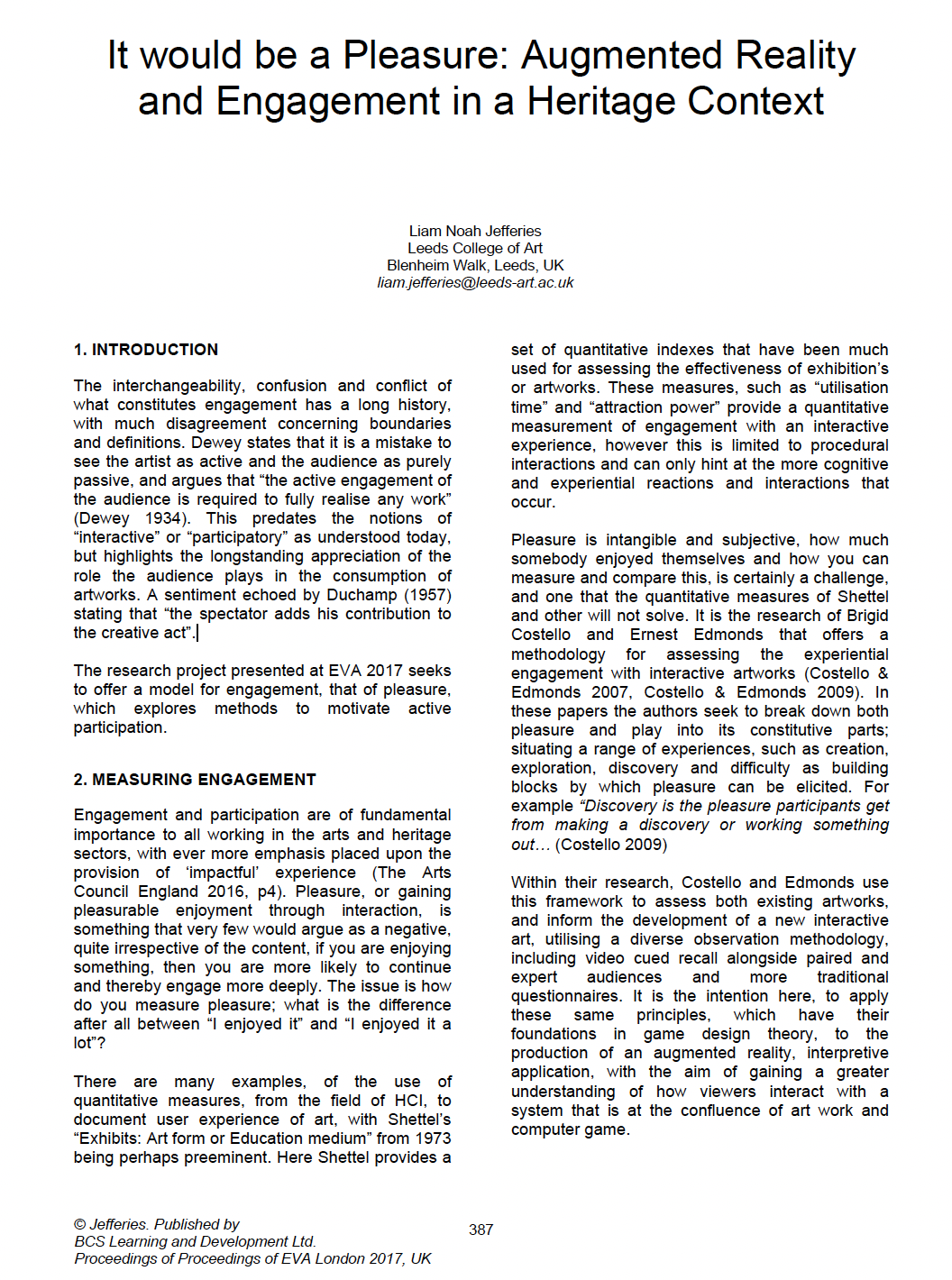It would be a Pleasure: Augmented Reality and Engagement in a Heritage Context.
The interchangeability, confusion and conflict of what constitutes engagement has a long history, with much disagreement concerning boundaries and definitions. Dewey states that it is a mistake to see the artist as active and the audience as purely passive, and argues that “the active engagement of the audience is required to fully realise any work” (Dewey 1934). This predates the notions of “interactive” or “participatory” as understood today, but highlights the longstanding appreciation of the role the audience plays in the consumption of artworks. A sentiment echoed by Duchamp (1957) stating that “the spectator adds his contribution to the creative act”.

